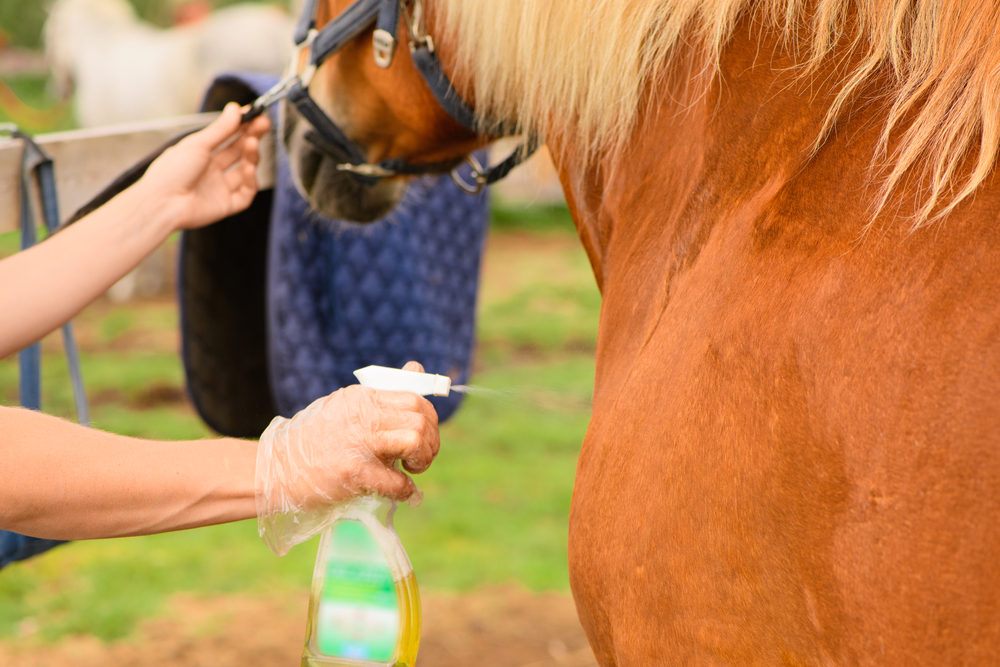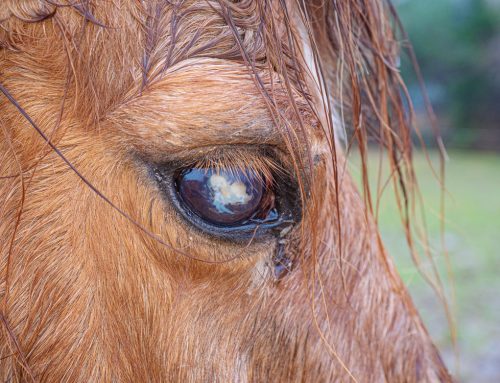Lyme disease is prevalent in New York and can cause serious health issues for your horse. Our Leatherstocking Veterinary Services team often treats horses affected by this tick-borne disease. We want you to understand equine Lyme disease, so we explain the disease and the measures you can take to decrease your horse’s risk.
What is Lyme disease?
Lyme disease is caused by the spirochete bacterium Borrelia burgdorferi. The illness was first recognized in Lyme, Connecticut, in 1975 when the local people suffered from debilitating health issues, such as swollen joints, skin rashes, headaches, severe chronic fatigue, and paralysis. The pathogen can infect many different species, including humans, horses, and dogs. White-footed mice and other small wild mammals commonly act as reservoirs.
How do horses get Lyme disease?
Ixodes scapularis ticks, which are also known as deer ticks and black-legged ticks, transmit Lyme disease to horses. The tick must stay attached for at least 24 hours before transmission can occur.
Is Lyme disease common in horses?
Lyme disease is common in horses living in regions, such as New York, that are endemic for black-legged ticks. Infection prevalence is likely on the rise, since the tick’s range is expanding.
What are Lyme disease signs in horses?
Lyme disease can have numerous effects on horses. Clinical disease syndromes include:
- Neuroborreliosis — When Lyme pathogens infect the nervous tissue, signs may include muscle atrophy, weight loss, facial paralysis, an inability to swallow, incoordination, behavioral changes, increased sensitivity, muscle twitching, and neck or back stiffness.
- Uveitis — Lyme disease can cause inflammation inside the horse’s eyes, resulting in tearing, squinting, and a cloudy appearance to the cornea. These cases typically affect both eyes and may progress to blindness.
- Cutaneous pseudolymphoma — In some cases, affected horses develop skin nodules, often where the tick was attached.
- Bursitis — When the Lyme pathogens invade a joint, they cause joint inflammation and swelling.
- Other — Other signs associated with Lyme disease in horses include stiffness, typically in all four limbs, shifting limb lameness, laminitis, and muscle wasting.
How is Lyme disease diagnosed in horses?
When horses exhibit potential Lyme disease signs, diagnostics may include:
- Screening blood work — Our team may recommend a complete blood count and biochemistry profile to rule out other conditions that may cause your horse’s signs.
- Lyme snap test — A Lyme snap test provides a positive or negative answer about your horse’s exposure to Lyme disease.
- Lyme multiplex assay — The Equine Lyme Multiplex assay is a more sensitive and specific Lyme disease test that detects antibodies to three B. burgdorferi antigens in equine serum, and horses can test positive three to five weeks after infection. The assay provides a numeric antibody for each antigen:
- Osp A — Osp A positive results typically mean the horse is vaccinated against Lyme disease.
- Osp C — Osp C positive results typically indicate early Lyme infection. Osp C antibodies can be detected as early as three weeks after infection and decline at 7 to 11 weeks, usually becoming undetectable four to five months post infection.
- Osp F — Osp F positive results typically indicate chronic Lyme infection. Osp F antibodies are detectable by five to eight weeks after infection and remain at high levels. Horses who are Osp F positive and Osp C negative likely have been infected with Lyme disease for at least five months.
How is Lyme disease treated in horses?
B. burgdorferi is susceptible to antibiotic treatment, and most horses must be treated for at least 30 days to resolve the infection. In some resistant cases, antibiotics must be continued for several months to clear the infection. Our team may also prescribe other medications, such as non-steroidal anti-inflammatories (NSAIDs), to alleviate your horse’s discomfort or pain. In addition, horses affected by Lyme uveitis typically require topical eye medications several times per day.
What is the prognosis for Lyme disease in horses?
Horses affected by uncomplicated Lyme disease typically improve and return to their normal fitness level after appropriate treatment. Those with uveitis or neurological disease have a poorer prognosis for recovery.
How is Lyme disease prevented in horses?

A definitive Lyme disease preventive doesn’t exist, but you can take steps to decrease your horse’s risk, including:
- Mowing pastures — Keeping pastures mowed prevents ticks from crawling up tall grasses to target horses.
- Tick inspections — Closely inspect your horse daily and remove any ticks, which can attach anywhere but commonly like to hide under the tail, around the udder and sheath, where the limbs meet the body, and on the face.
- Tick control — Use tick control pour-ons and sprays containing permethrin.
- Prevent rodents — Remove brush and wood piles in your pasture to reduce nesting sites for rodents that carry tick larvae and nymphs.
- Keeping out deer — Keep deer, who often carry infected adult ticks, out of pastures.
- Vaccination — Consider vaccinating your horse. While no Lyme vaccine is licensed for use in horses, vaccination with canine Osp A vaccine is at least partially protective.
Contact our Leatherstocking Veterinary Services team if you would like your horse tested or vaccinated for Lyme disease







Leave A Comment